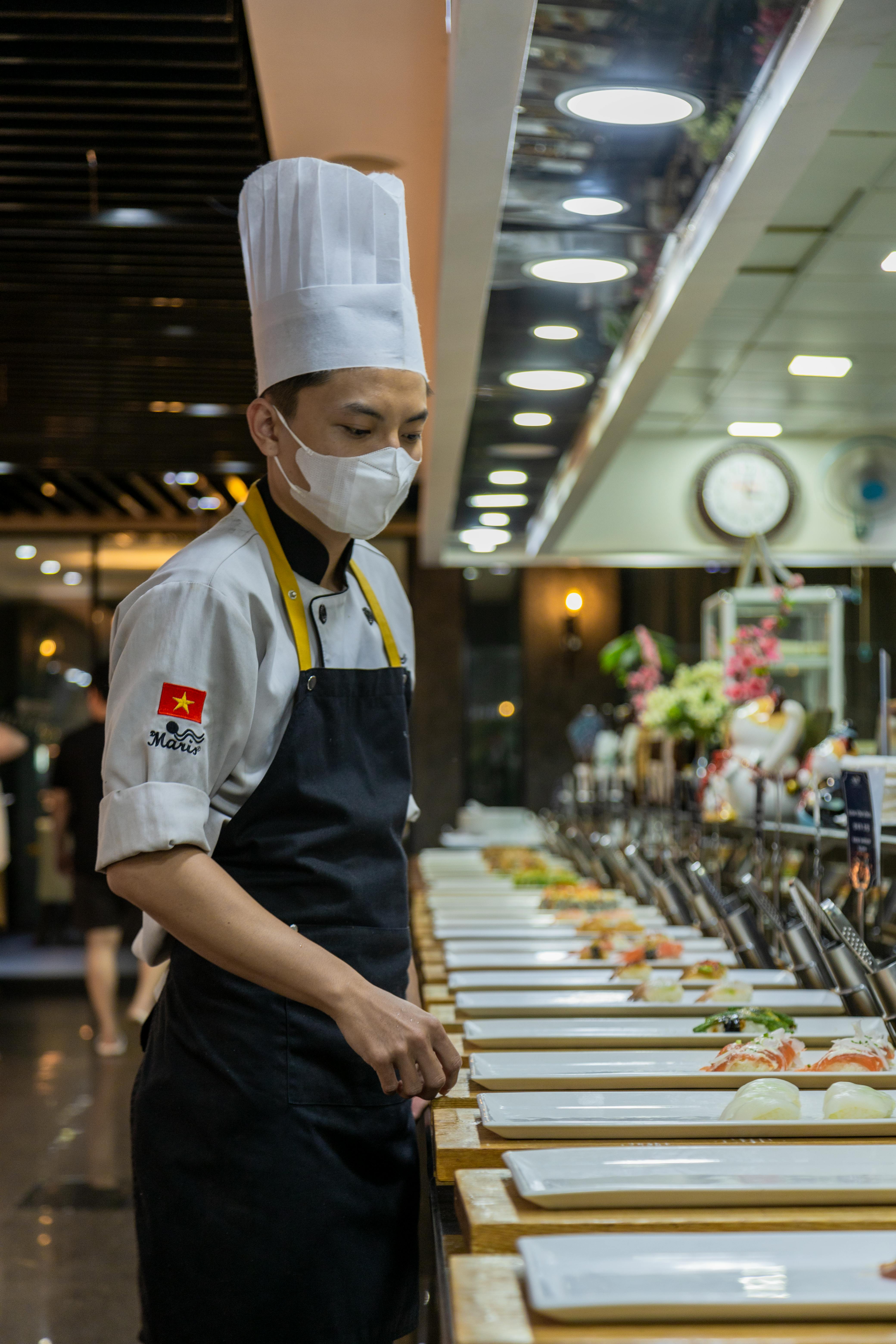When it comes to slow cooking, finding the right cookware can make all the difference in creating a delicious and tender meal. But with so many options out there, it can be overwhelming to know what to look for. Don’t worry, we’ve got you covered. In this article, we’ll guide you through the process of choosing cookware that is perfect for your slow cooking methods, ensuring that your meals are flavorful and cooked to perfection every time. So let’s get started on your journey to becoming a slow cooking pro!
Choosing the Right Material for Slow Cooking
When it comes to slow cooking, choosing the right cookware material is essential for achieving the best results. Different materials have different heat-conducting properties and react differently to certain ingredients, so it’s important to understand the pros and cons of each. In this article, we will explore the best materials for slow cooking, discuss considerations for selecting the right cookware, and provide tips for maintaining and maximizing the lifespan of your slow cooking cookware.
Understanding Different Cookware Materials
Before diving into the specific materials suitable for slow cooking, it’s important to have a basic understanding of the different types of cookware materials available. The most common materials include stainless steel, cast iron, enamel-coated cast iron, and non-stick coated cookware. Each material has its own unique features and benefits.
Stainless steel is known for its durability, resistance to rust and staining, and excellent heat distribution. Cast iron, on the other hand, is a heavyweight material that offers unmatched heat retention and even cooking. Enamel-coated cast iron combines the advantages of both cast iron and a smooth enamel surface, making it easier to clean and maintain. Non-stick coated cookware is known for its convenience and ease of use, but it may not be the best choice for slow cooking due to its limited heat retention capabilities.

Best Materials for Slow Cooking
When it comes to slow cooking, materials that excel in heat retention and even heat distribution are key. This is where cast iron and enamel-coated cast iron shine. These materials are excellent at holding heat, which allows for slow and steady cooking over an extended period of time. They evenly distribute heat, ensuring that your ingredients cook evenly and thoroughly.
Stainless steel cookware is also a great option for slow cooking. While it may not retain heat as well as cast iron, it still provides good heat distribution and is incredibly durable. Stainless steel is also non-reactive, making it a safe choice for slow cooking acidic ingredients, such as tomatoes.
Avoiding Reactive Materials
Reactive materials, such as uncoated aluminum and copper, should be avoided when it comes to slow cooking. These materials can react with acidic ingredients, causing off-flavors and potentially harmful substances to leach into your food. It’s best to opt for non-reactive materials like stainless steel, cast iron, and enamel-coated cast iron to ensure the safety and quality of your slow-cooked meals.

Considerations for Slow Cooking Cookware
When selecting the right cookware for slow cooking, there are several key factors to consider. These factors will help you determine the suitability of a particular piece of cookware for your slow cooking needs.
Size and Capacity
Consider the size and capacity of the cookware you need. Slow cooking often involves cooking large quantities of food over a long period of time, so you’ll want to choose a pot or pan that can accommodate your recipes. Additionally, keep in mind the size of your stovetop or oven to ensure that the cookware will fit comfortably.
Heat Conductivity
Heat conductivity is an important consideration for slow cooking. Cookware with good heat conductivity will distribute heat evenly, resulting in uniform cooking. Cast iron and enamel-coated cast iron are known for their excellent heat conductivity, while stainless steel is also a good option.
Compatibility with Stovetop and Oven
Make sure that the cookware you choose is compatible with both stovetop and oven use, as slow cooking often involves transferring the cookware from one heat source to another. Not all cookware materials are suitable for use on all types of stovetops or in ovens, so be sure to check the manufacturer’s recommendations.
Lid Type and Fit
The type and fit of the lid are important for slow cooking. A well-fitting lid will help retain heat and moisture, resulting in tender and flavorful dishes. Look for a lid that has a tight seal and is made of durable materials. Glass lids are particularly useful as they allow you to monitor the cooking process without having to lift the lid.
Ease of Cleaning
Consider the ease of cleaning when choosing slow cooking cookware. Slow cooking often involves long cooking times, which can result in stubborn food residues. Non-stick coated cookware may offer easier cleanup, but it may not be the best option for slow cooking due to its limited heat retention capabilities. Cast iron and enamel-coated cast iron can be a bit more challenging to clean, but they develop a natural non-stick surface over time with proper seasoning and care.
Specific Cookware Types for Slow Cooking
Now that we’ve covered the considerations for choosing slow cooking cookware, let’s explore some specific types of cookware that are well-suited for slow cooking.
Dutch Ovens
Dutch ovens are a classic choice for slow cooking. These heavy-duty pots are made of cast iron or enamel-coated cast iron and feature a tight-fitting lid. Dutch ovens are known for their excellent heat retention and even heat distribution, making them perfect for slow simmering, braising, or stewing. They are versatile and can be used on both stovetops and in ovens.
Crock-Pots and Slow Cookers
Crock-Pots and slow cookers are specifically designed for slow cooking. They are electric appliances that allow you to set a desired cooking temperature and cooking time, making them extremely convenient for busy cooks. Crock-Pots and slow cookers typically feature a removable stoneware insert, which can be used directly on the stovetop for browning or sautéing before transferring it to the base for slow cooking.
Cast Iron Skillets and Pans
Cast iron skillets and pans are not only great for searing and frying, but they are also excellent for slow cooking. Their exceptional heat retention ensures that your food cooks evenly and stays warm for a long time. They can be used on both stovetops and in ovens, making them versatile options for slow cooking various dishes.
Enamel-Coated Cast Iron Cookware
Enamel-coated cast iron cookware combines the benefits of cast iron’s heat retention and enamel’s smooth non-reactive surface. This type of cookware is easier to clean and maintain compared to traditional cast iron, while still providing excellent heat distribution. It can be used on all heat sources, including induction stovetops, and is ideal for slow cooking a wide range of recipes.
Stainless Steel Cookware
Stainless steel cookware is a popular choice for slow cooking due to its durability and excellent heat distribution. It is non-reactive and can withstand high temperatures, making it suitable for browning, simmering, and roasting. Look for stainless steel cookware with an aluminum or copper core, as these materials provide better heat conductivity.

Additional Features to Look For
In addition to the cookware materials and types mentioned above, there are some extra features that can enhance your slow cooking experience.
Multiple Heat Sources Compatibility
If you plan to use your slow cooking cookware on various heat sources, such as stovetops, ovens, or even induction cooktops, make sure it is compatible with all of them. Not all cookware materials are suitable for induction cooking, so be sure to check the manufacturer’s specifications.
Insulated Handles
Slow cooking cookware tends to get hot, so having insulated handles can greatly improve safety and ease of handling. Look for cookware with heat-resistant handles that stay cool to the touch, even when the pot or pan is hot.
Drip-Free Pouring
Having a cookware piece with a spout or specially designed pouring edges can make pouring liquids, such as sauces or soups, much easier and neater.
Clear and Durable Glass Lids
Glass lids are not only convenient for monitoring the cooking process without lifting the lid, but they are also durable and resistant to high temperatures. Look for glass lids that are oven-safe and have a sturdy handle.
Versatility and Multi-Functionality
Some cookware sets offer additional pieces, such as steamer inserts, pasta inserts, or roasting racks. These versatile accessories can significantly expand the range of dishes you can prepare with your slow cooking cookware.
Tips for Maintaining and Maximizing Slow Cooking Cookware
To ensure the longevity and performance of your slow cooking cookware, follow these tips for proper maintenance and care.
Seasoning and Caring for Cast Iron
If you have cast iron cookware, proper seasoning is crucial. Seasoning creates a natural non-stick surface and helps prevent rust. To season your cast iron cookware, clean it thoroughly, apply a thin layer of oil, and bake it at a low temperature. Regularly oiling and gently cleaning your cast iron cookware will help maintain its seasoning and prevent food from sticking.
Proper Storage and Handling
To prevent scratches and damage, store your slow cooking cookware properly. Stack pans and skillets with a layer of paper towel or a soft liner between each piece. Avoid sliding or banging your cookware to prevent chipping or cracking.
Avoiding Extreme Temperature Changes
Avoid subjecting your cookware to sudden temperature changes, as this can cause warping or cracking. Allow your cookware to cool down before immersing it in cold water or placing it in the fridge.
Using Cooking Utensils Suitable for the Cookware
When using slow cooking cookware, make sure to use utensils that are safe for the material. Utensils made of wood, silicone, or nylon are gentle on the surfaces and won’t scratch your cookware.
Regular Cleaning and Maintenance
Regularly clean your slow cooking cookware to prevent food build-up and maintain its performance. Follow the manufacturer’s instructions for cleaning your specific cookware material. Avoid abrasive cleaners or scouring pads that can damage the surface of your cookware.
Budget Considerations
Cookware can range in price from budget-friendly options to high-end luxury sets. When it comes to slow cooking cookware, finding affordable options is still possible without compromising quality. Look for sales, discounts, or consider purchasing individual pieces instead of entire sets to fit your budget while still investing in quality cookware that will provide excellent slow cooking results.
Conclusion
Choosing the right cookware for slow cooking is a crucial step in ensuring delicious and well-cooked meals. By understanding the different materials, considering various factors, and exploring specific cookware types, you can find the perfect match for your slow cooking needs. Remember to prioritize your cooking preferences, experiment, and take proper care of your slow cooking cookware to enjoy many flavorful and satisfying meals for years to come.


